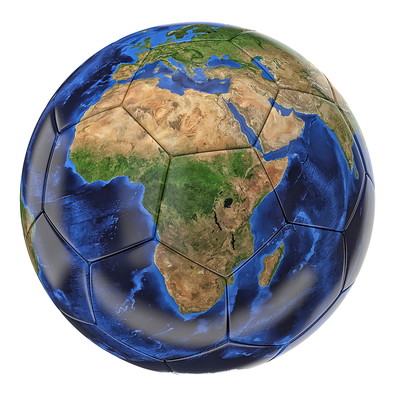 The Africa Cup of Nations (AFCON) is a biennial football tournament run by the Confederation of African Football (CAF) for international teams on the continent. This is the African equivalent of the European Championship and the Copa America in South America.
The Africa Cup of Nations (AFCON) is a biennial football tournament run by the Confederation of African Football (CAF) for international teams on the continent. This is the African equivalent of the European Championship and the Copa America in South America.
AFCON predates the Euros by three years having been held first in 1957 when Egypt won a three-team tournament held in Sudan. It is also Egypt who are the cup’s most prolific winners, lifting the trophy on seven occasions.
As with other international finals, there is a qualification process involving group stages with the leading teams progressing to the finals. These finals are held by a host nation and involve 24 teams. There is an initial round robin group stage followed by knockout stage with a round of 16, quarter-finals, semi-finals and final.
African Cup of Nations Winners By Year
| Year | Hosts | Winner | Score | Runners-up |
|---|---|---|---|---|
| 2023 | Ivory Coast | Ivory Coast | 2–1 | Nigeria |
| 2021 | Cameroon | Senegal | 0–0 / 4–2 (pens) | Egypt |
| 2019 | Egypt | Algeria | 1–0 | Senegal |
| 2017 | Gabon | Cameroon | 2–1 | Egypt |
| 2015 | Equatorial Guinea | Ivory Coast | 0–0 / 9–8 (pens) | Ghana |
| 2013 | South Africa | Nigeria | 1–0 | Burkina Faso |
| 2012 | Gabon / Equatorial Guinea | Zambia | 0–0 / 8–7 (pens) | Ivory Coast |
| 2010 | Angola | Egypt | 1–0 | Ghana |
| 2008 | Ghana | Egypt | 1–0 | Cameroon |
| 2006 | Egypt | Egypt | 0–0 / 4–2 (pens) | Ivory Coast |
| 2004 | Tunisia | Tunisia | 2–1 | Morocco |
| 2002 | Mali | Cameroon | 0–0 / 3–2 (pens) | Senegal |
| 2000 | Ghana / Nigeria | Cameroon | 2–2 / 4–3 (pens) | Nigeria |
| 1998 | Burkina Faso | Egypt | 2–0 | South Africa |
| 1996 | South Africa | South Africa | 2–0 | Tunisia |
| 1994 | Tunisia | Nigeria | 2–1 | Zambia |
| 1992 | Senegal | Ivory Coast | 0–0 / 11–10 (pens) | Ghana |
| 1990 | Algeria | Algeria | 1–0 | Nigeria |
| 1988 | Morocco | Cameroon | 1–0 | Nigeria |
| 1986 | Egypt | Egypt | 0–0 / 5–4 (pens) | Cameroon |
| 1984 | Ivory Coast | Cameroon | 3–1 | Nigeria |
| 1982 | Libya | Ghana | 1–1 / 7–6 (pens) | Libya |
| 1980 | Nigeria | Nigeria | 3–0 | Algeria |
| 1978 | Ghana | Ghana | 2–0 | Uganda |
| 1976 | Ethiopia | Morocco | 1–1[c] | Guinea |
| 1974 | Egypt | Zaire | 2–0 (replay) | Zambia |
| 1972 | Cameroon | PR Congo | 3–2 | Mali |
| 1970 | Sudan | Sudan | 1–0 | Ghana |
| 1968 | Ethiopia | DR Congo | 1–0 | Ghana |
| 1965 | Tunisia | Ghana | 3–2 (aet) | Tunisia |
| 1963 | Ghana | Ghana | 3–0 | Sudan |
| 1962 | Ethiopia | Ethiopia | 4–2 (aet) | United Arab Republic |
| 1959 | United Arab Republic | United Arab Republic | 2–1 | Sudan |
| 1957 | Sudan | Egypt | 4–0 | Ethiopia |
Tournament Format & Background
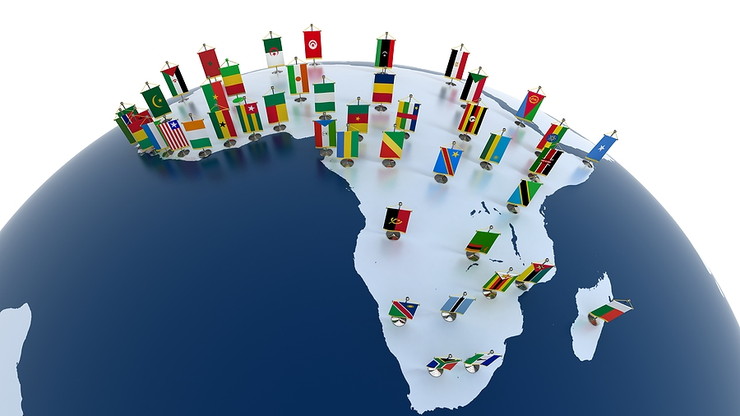
Although often referred to as the African Cup of Nations, this competition is officially known as and goes by the name Africa Cup of Nations, or AFCON for short. Unlike other international tournaments such as the World Cup and European Championships which appear every four years, AFCON is held more frequently, scheduled every two years (although reasonably frequent changes to the schedule and unforeseen events have meant things are not always quite so neat). Unlike in previous years, the tournament is now scheduled for the summer (when possible) to avoid European clubs having to release key players in their middle of their season.
This switch from the Northern Hemisphere winter to summer was not the only change AFCON witnessed in 2019. In addition to this, the tournament expanded from 16 to 24 teams, forcing a slight change in format to how both qualification and the finals worked. As well as covering how the tournament used to operate, we will look at the current structure and how one nation ends up being crowned champions of Africa.
Qualification
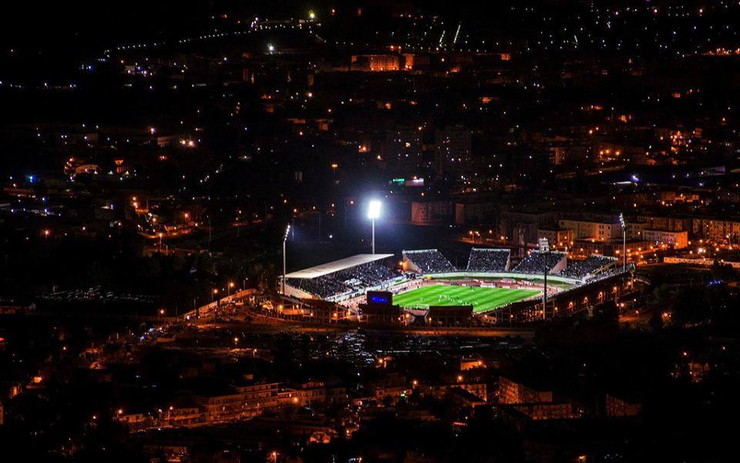
The current system for qualifying for the finals of AFCON is quite straightforward, at least on paper. In practice, things may prove rather trickier for any hopeful nation. To begin with, teams are placed into different pots based on their FIFA World Rankings prior to the draw. Pot 1 features the highest ranked teams, moving down to Pot 4 where you have the lowest ranked teams. Each pot features 12 nations and each group, of which there will be 12 stretching from A to L, will feature one team from each pot. Got that?
As there is only space for 48 teams in the group stages (12 groups of 4) it is usually necessary to play a small preliminary round before the group stage draw just to eliminate a handful of the weakest sides on the continent. In the preliminary round, the relevant number of the lowest ranked teams are randomly drawn against one another and required to play a two-legged knockout match. The winners from these clashes, of which there might be four to six depending on the exact number of entries, make their way into the main qualification draw, while the rest are eliminated.
AFCON 2021 Qualification Groups
| Group | Seed 1 | Seed 2 | Seed 3 | Seed 4 |
|---|---|---|---|---|
| A | Mali | Guinea | Namibia | Chad |
| B | Burkina Faso | Uganda | Malawi | South Sudan |
| C | Ghana | South Africa | Sudan | Sao Tome & Principe |
| D | DR Congo | Gabon | Angola | Gambia |
| E | Morocco | Mauritania | Central African Republic | Burundi |
| F | Cameroon | Cape Verde | Mozambique | Rwanda |
| G | Egypt | Kenya | Togo | Comoros |
| H | Algeria | Zambia | Zimbabwe | Botswana |
| I | Senegal | Congo | Guinea-Bissau | Eswatini |
| J | Tunisia | Libya | Tanzania | Equatorial Guinea |
| K | Ivory Coast | Niger | Madagascar | Ethiopia |
| L | Nigeria | Benin | Sierra Leone | Lesotho |
In each qualification group consisting of four teams, each nation will play one another both home and away, meaning they have six fixtures to play – a very standard format. Naturally the aim is to finish top of the group but a runner-up finish virtually gives passage to the finals. We can only say ‘virtually’ because there is a chance that one runner-up will not qualify should the tournament hosts have a poor time in qualifying (see below). After the full round of fixtures, should two teams end up level on points, which is a frequent occurrence, then the following tie-breakers will be used.
- Points in head-to-head matches among tied teams
- Goal difference in head-to-head matches among tied teams
- Goals scored in head-to-head matches among tied teams
- Away goals scored in head-to-head matches among tied teams
There are an additional five tie-breakers that can be deployed if required but in almost all cases the above rules are sufficient.
The Hosts
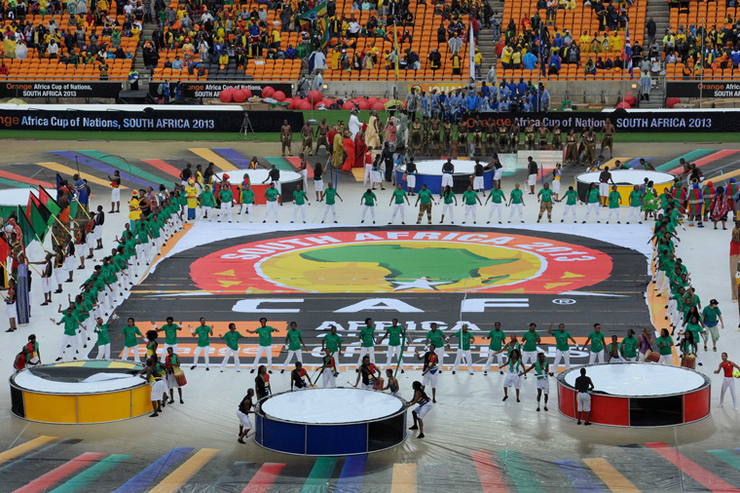
In many competitions, the tournament hosts are guaranteed a place in the finals and therefore skip the entirety of the qualification process. The former is true of AFCON hosts but typically the host nation takes part in qualifiers anyway, despite the fact that nothing is riding on it. Their involvement is not without purpose though because their matches are treated as ‘proper’, and thus they do impact the other teams involved in the group. To the host though, winning the group or finishing bottom makes no difference as they are guaranteed a Pot 1 slot for the main group stage draw whatever happens.
This approach may seem strange to many but has the benefit of allowing the hosts competitive practice ahead of a tournament, rather than relying on friendlies. In some previous AFCONs the hosts would be part of their group but their matches would not be included in the official standings, effectively making them friendlies. The only potential issue this approach can create is when the host finishes outside the top two of their qualification group. Should this happen, you would have 24 top two finishes plus the hosts, which is one side too many. In such an eventuality, the worst ranking group runner-up would miss out in order to make room for the hosts. This can add a slight degree of uncertainty for some teams heading into the last round of qualification matches.
The Group Stages
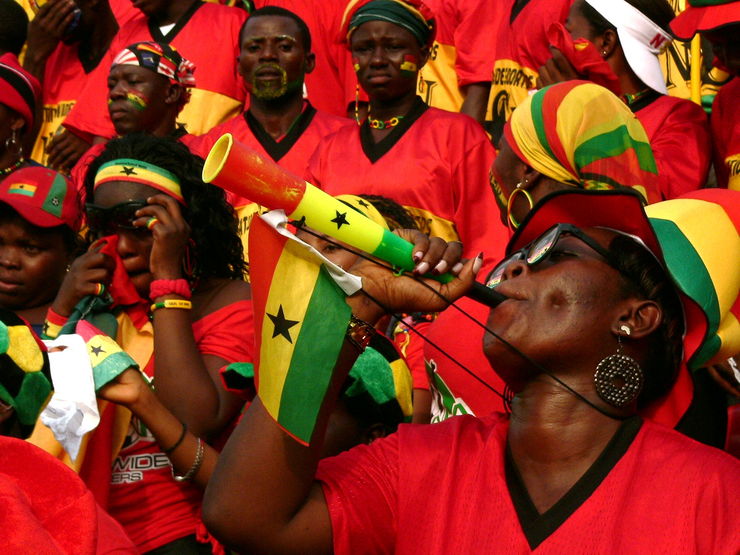
When the 24 AFCON finalists are confirmed, this allows the group stage draw for the finals to be made. As is common for any group stage, teams are seeded (based on FIFA Rankings) and then split into a relevant pot. The only two nations exempt from this process are the hosts and title holders (assuming the latter qualify) who both automatically feature in Pot 1 regardless of their ranking at the time. In 2019, both Egypt and Cameroon would have instead been in Pot 2 had it not been for this rule.
The draw produces six groups (A to F) featuring four teams in each who play one another just the once – again, pretty standard stuff. Eight countries need to face elimination at this stage so anyone finishing bottom of their group is automatically eliminated. In addition, the two worst-ranking third-place teams also wave goodbye to the tournament. The ranking of all third-placed teams first looks at points before moving onto goal difference, goals scored and then disciplinary points if required. In the unlikely event that two teams have an identical record once these four measures have been applied then one will be selected at random.
Knockout Stages
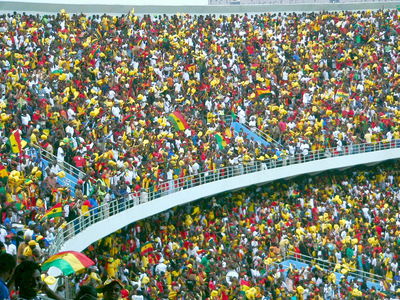
The four best third-place teams join the group winners and runners-up in the round of 16. The final group standings will use the same tie-breaker rules as per the qualification rounds should two teams end up level on points. This is important because the lower a team finishes in the group, the more likely a harder round of 16 tie awaits, in theory at least. This is because all third-placed teams are guaranteed to be paired against a winner of a different group.
Knockout stages work in a very standard format, with each fixture a one-legged affair that will head to extra time and penalties (if needed) in the event of a draw. Over the space of a couple of days, the 16 teams surviving turns into 8 (the quarter finals) and by this stage teams can seriously start thinking about going all the way. The four winning quarter finalists continue to a one-legged semi-final. The two teams that lose their semi-final match enter a third-place play-off which is played shortly before the final itself.
The Final
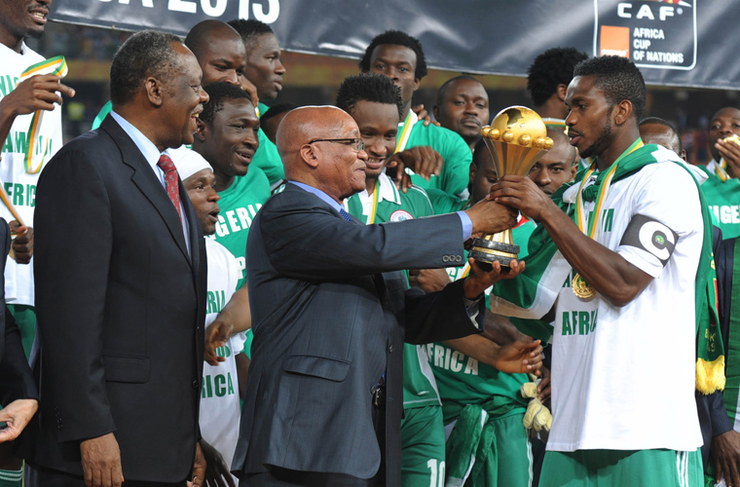
As for the showpiece, like with all other knockout matches, there must be a winner on the day. Often extra time and penalties are needed to find a winner as the AFCON final tends to be a highly competitive affair. Including AFCON 2021, six of the previous 12 finals of the competition saw a penalty shootout. Additionally, you would have to go all the way back to 1998 to find the last time the final was settled by more than a one goal margin. So, as far as major finals go, you will struggle to find many that are as consistently nail-biting. That said, do not necessarily come expecting goals because the finals in 2021, 2015, 2012, 2006 and 2002 did not see the ball hit the back of the net until the penalty shootout, all five ending 0-0 after extra time.
Whether normal time, extra time or penalties, we will eventually have our triumphant victor who can celebrate long into the night. In addition to the unrivalled joy they experience, the champions also receive something more tangible for their efforts, the AFCON trophy. Normally the trophy needs to be returned but two nations have kept their own trophy on a permanent basis. Ghana, when becoming the first three-time AFCON champions in 1978 gained the right to hold the Abdelaziz Abdallah Salem Trophy. When matching the feat in 2000, Cameroon kept hold of the second AFCON trophy, the African Unity Cup.
Following a subsequent rule change, when Egypt racked up a trio of consecutive wins in 2010 (having been successful in 2008 and 2006), they were only able to take home a full replica of the latest trophy design. As well a trophy for the winning team, the Confederation of African Football also hands out 30 gold medals for the champions, 30 silver medals for the runners-up and 30 medals to the winner of the third-place play-off. In older AFCON editions, the reigning champion also qualified for the next tournament but this is no longer the case.
Previous Formats
As with most tournaments that have been around for many years, the format of AFCON has undergone many changes over the years including a gradual expansion of the number of teams involved. The first two editions of the tournament only saw three teams play, meaning it was hardly much of a tournament at all. This number did soon increase to six and then eight though, which remained for many years.
Later expansions saw the finals include 12 teams and then 16 teams (last used in 2017). The number of teams involved has naturally had a big impact on how the tournament is organised. The 1959 AFCON which had just three teams featured one solitary group with each team playing two fixtures. The eight-country tournaments by contrast had two groups of four, with the two top-finishers heading straight into the semi-finals.
More recently, the 16-team format which survived around two decades before the expansion in 2019, simply had four groups of four and the two top from each headed into the quarter finals. There have also been changes made to the qualification rounds, sometimes brought on by an increase in the number of participating teams or lack of time. In 2013, with a year less than normal to run qualifiers (due to having a 2012 tournament) the CAF arranged a series of two-legged knockout rounds to determine who reached the finals. A knockout element remained for 2015 qualification but it concluded with seven groups of four with the top two progressing, plus the best third-placed team.
For much of its history, AFCON has taken place during even-numbered years. This system was scrapped in 2012 though with the next edition of the tournament beginning in 2013. Prior to this there had not been an AFCON in an odd-year since 1965. No matter if odd or even though, AFCON had previously always taken place in the Northern Hemisphere winter, unusually starting in January. In 2019 though fans saw the first ever summer tournament with the first match played on the 21st June in Egypt. This was implemented as a permanent change but the 2021 AFCON in Cameroon had to move back to the winter due to concerns about the heat a tournament there in June would pose.
Awards
At the end of each AFCON there are small number of different categories for which a winner is named. The categories themselves can change year on year but you will always have a player of the tournament, otherwise known as ‘man of the competition’. This award goes to the player that most impressed throughout the duration of the competition and is typically someone from the winning side, but not always. It is almost certain to go to an outfield player though as goalkeepers tend to have their own category. Whichever number one impresses most between the sticks ends up with the best goalkeeper award.
In addition to these, previous AFCONs have also given some sort of award to the tournament’s top goalscorer and the best young player. Fair Play is something the CAF are also keen to award so regularly you will find there is a Fair Play Team award handed out. In previous years, such as 2015 and 2013, the CAF went even further by having a ‘Fair Player of the Tournament’ category but this has not featured since.
It is not always just about the players though as in 2021 Aliou Cisse picked up the ‘Coach of the Tournament’ award. Additionally, he was listed as the manager in the official ‘team of the tournament’. This is a starting XI produced by CAF but players only receive acknowledgment of their good performance if included, rather than any sort of prize.
Tournament History & Records
When four nations agreed to establish the Confederation of African Football (CAF), they immediately put plans together for a continental tournament. The founding CAF members, and subsequently the four sides down to participate for the first ever AFCON in 1957, were Egypt, Ethiopia, South Africa and Sudan. South Africa did not end up playing a match though as they were disqualified due to their apartheid policies, thus giving Ethiopia a bye to the final.
The following AFCON saw the same three nations take part as in the inaugural tournament with South Africa still prevented from taking their place. Egypt managed to retain their title although they were playing under the name of United Arab Republic by 1959. Interest in the competition grew over time and by 1962 a qualification round had to be introduced for the very first time. It was a very brief qualification stage by modern standards with only seven matches taking place and five teams involved.
After Ghana repeated Egypt’s feat of securing back-to-back AFCON victories in 1963 and 1965, the CAF put a limit on the number of overseas players any nation could have (players who played their club football outside their home country). This restrictive limit was set at just two players and it remained in place until 1982. During this period AFCON enjoyed its first taste of live television coverage with the 1970 edition of the tournament the first ever to be broadcast. This allowed people from all over the host nation of Sudan to see their county triumph over Ghana.
Although the tournament only featured eight teams across the entirety of the 1970s and stretching as far as 1990, qualification was much more substantial that it had been back in 1961. For the 1974 AFCON for example, 27 teams were entered into the qualification stage although only 22 ended up playing following a number of withdrawals or disqualifications. This particular tournament is the only AFCON that was settled following a replayed final. Although no longer possible now with finals always settled on the day, back then a tied match (after extra-time) would require another full 90 minutes to determine a winner. In the replay, held just two days later at the same stadium, Zaire proved victorious with Ndaye Mulamba scoring twice, just as he did in the first encounter. Clearly a player for the big occasion!
With replays scrapped fairly soon after this final, in 1982 fans witnessed the first AFCON decided by a penalty shootout. Held in Libya, the host nation could not hold their nerve as they lost the 12-yard battle with Ghana 7-6. This is Libya’s sole appearance at the final stage of the competition, meaning they have never lifted the AFCON trophy, unlike the teams we are about to discuss.
Most Successful Teams
No team has enjoyed more success in this competition than Egypt although two of their wins came in years when there were only two other participating nations. Even putting these to one side though, the Pharaohs would still be the joint leaders alongside Cameroon. Next in the list are Ghana but the Black Stars have been rather unlucky of late. They have not won the competition since 1982 and have lost three finals and five semi-finals since. The list below includes all teams with an AFCON victory to their name.
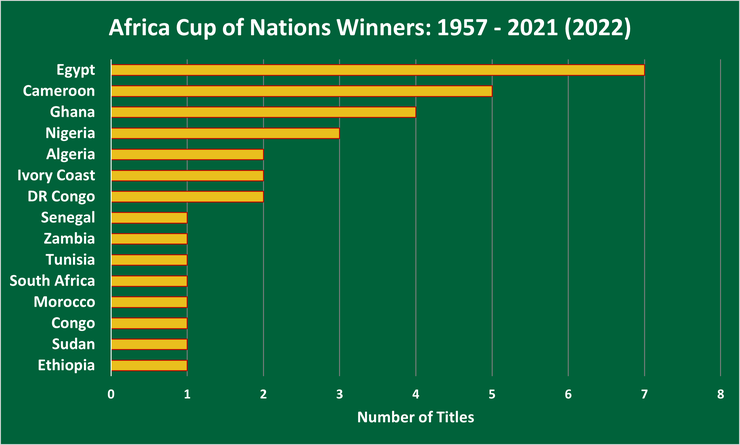
As we can see, the list is dominated by North and West African sides. Being the host nation does appear to be a considerable advantage during AFCON given that the hosts have prevailed on 11 occasions from a possible 33. In an additional 13 instances, the hosts failed to win but did reach the final or semi-finals.
Top Scorers
Some extremely talented attacking players have graced AFCON over the years and found the back of the net at extremely crucial times. The all-time scoring record of 18 goals set by Samuel Eto’o is under no immediate danger as all others players with more than 10 goals are no longer active. Therefore, it could be a fair while before someone manages to better this extremely impressive haul. The expansion of the tournament, and the introduction of an additional round, does make the task that little bit more obtainable though. Eto’o was truly a world class player though, and had the fortune to play in a very talented Cameroon side that lifted this trophy twice, as well as taking Olympic gold in 2000. The former Barcelona, Inter Milan and, err, Everton, striker is right up there in any debate of the greatest African footballer ever.
AFCON Top Goalscorers: 1957 – 2021 (2022)
| Player | Team | Goals | Matches | Goals Per Game | Last Tournament |
|---|---|---|---|---|---|
| Samuel Eto’o | Cameroon | 18 | 29 | 0.62 | 2010 |
| Laurent Pokou | Ivory Coast | 14 | 12 | 1.17 | 1980 |
| Rashidi Yekini | Nigeria | 13 | 20 | 0.65 | 1994 |
| Hassan El-Shazly | Egypt | 12 | 8 | 1.50 | 1974 |
| Patrick Mboma | Cameroon | 11 | 17 | 0.65 | 2004 |
| Hossam Hassan | Egypt | 11 | 21 | 0.52 | 2006 |
| Didier Drogba | Ivory Coast | 11 | 24 | 0.45 | 2013 |
Although Eto’o tops the charts, there are two players with a significantly superior goals per game ratio. Lauren Pokou was only capped 30 times for his country (whereas Eto’o played 29 times at AFCON alone) and Egypt’s Hassan El-Shazly, something of a Tersana SC legend, both better the Cameroon ace in terms of efficiency. None of these men are responsible for the most goals in a single tournament however. This accolade goes to the aforementioned Ndaye Mulamba who netted nine goals in AFCON 1974, of which four came in the final and replayed final.
Other Facts And Figures
To finish, enjoy some more AFCON records. As above, the data is valid up to and including the 2021 edition of the tournament, which was actually played in 2022 due to the global crisis you might have heard of.
- Most Tournaments Featured In – 8 (Rigobert Song & Ahmed Hassan)
- Oldest Player – Essam El Hadary was 44 years and 21 days when playing in the AFCON 2017 final
- Youngest Player – At just 16 years and 93 days, Shiva N’Zigou made history in a 2000 group stage match not only by playing, but by scoring too
- Most Appearances in Finals – 25 (Egypt)
- Most Consecutive Appearances in Finals – Tunisia made it 15 AFCONs in a row in 2021
- Player & Coach Winner – Only Hassan Shehata of Egypt and Charles Gyamfi of Ghana have won AFCON as a player and a mangeo